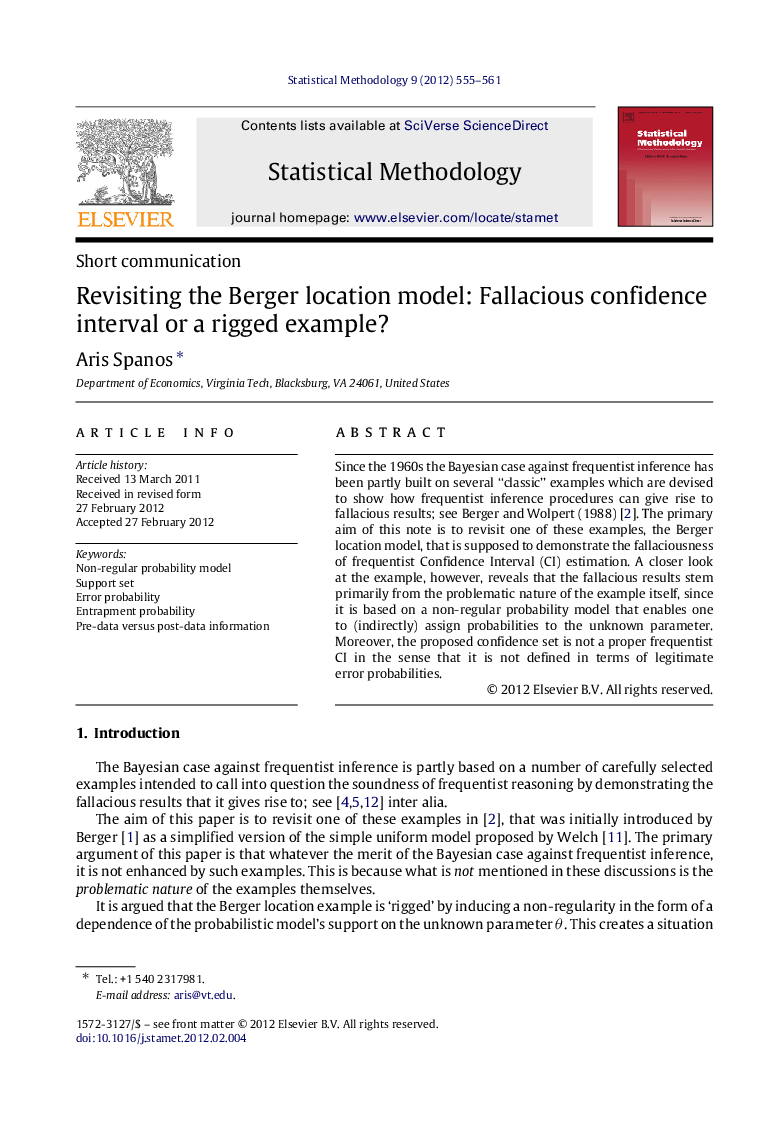| Article ID | Journal | Published Year | Pages | File Type |
|---|---|---|---|---|
| 1150921 | Statistical Methodology | 2012 | 7 Pages |
Since the 1960s the Bayesian case against frequentist inference has been partly built on several “classic” examples which are devised to show how frequentist inference procedures can give rise to fallacious results; see Berger and Wolpert (1988) [2]. The primary aim of this note is to revisit one of these examples, the Berger location model, that is supposed to demonstrate the fallaciousness of frequentist Confidence Interval (CI) estimation. A closer look at the example, however, reveals that the fallacious results stem primarily from the problematic nature of the example itself, since it is based on a non-regular probability model that enables one to (indirectly) assign probabilities to the unknown parameter. Moreover, the proposed confidence set is not a proper frequentist CI in the sense that it is not defined in terms of legitimate error probabilities.
